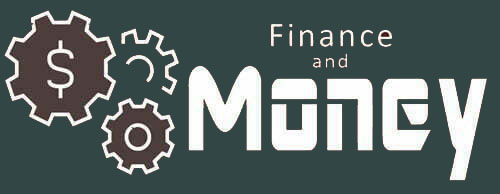The U.S. housing market in 2024 has reached a historic low, with home sales dropping to their weakest levels since 1995. According to the National Association of Realtors (NAR), only 4.06 million existing homes were sold last year. This is a stark contrast to the over six million homes sold during the pandemic-driven housing boom of 2021, underscoring the challenges posed by a market constrained by high costs and dwindling affordability. The decline in sales marks the second consecutive year of sluggish activity, driven by high mortgage rates, record-breaking home prices, and increasing costs of ownership. But is this enough to finally push home prices down, or are we on track to see further increases in the near future?
The Numbers Behind the Decline
The housing market’s struggles are largely tied to rising mortgage rates. Since late 2022, the average rate for a 30-year fixed mortgage has fluctuated between 6% and 8%, significantly increasing the cost of financing a home. For many potential buyers, these rates are prohibitively expensive. Compounding this challenge, the national median home price stood at $404,400 as of December 2024. While this figure represents a 5.3% decrease from the record high of $426,900 in June 2024, it is still 6% higher than the December 2023 median price, highlighting the persistent affordability crisis.
Adding to the financial strain are rising property taxes and home insurance premiums. According to Bankrate, U.S. homeowners now pay an average of $18,118 annually for property taxes, insurance, maintenance, and utilities. This marks a 26% increase from just four years ago, when these costs averaged $14,428 per year. “The hidden costs associated with owning a home are often underestimated,” said Jay Thomas, housing analyst. “For many, these expenses are the difference between stability and being house-poor.”
What Experts Say About Price Trends
The debate over where home prices are headed continues to divide experts. Lawrence Yun, NAR’s chief economist, argues that low inventory levels are keeping prices high despite falling sales. “How is it that home sales are so low while home prices are so high?” Yun asks. “Inventory appears to be a big factor driving sales.” Many homeowners are reluctant to sell because they are locked into historically low mortgage rates secured before rates began climbing. This trend, known as the “lock-in effect,” has significantly limited the number of homes available on the market.
Optimists, such as Priscilla Thiagamoorthy, a senior economist at BMO Capital Markets, point to recent monthly sales increases as a sign that buyers and sellers are beginning to adjust to the new norm of higher rates. “This could be a sign that buyers and sellers may be coming to terms with a higher interest rate environment,” she said. Builders have also stepped in to attract buyers, offering incentives like mortgage rate buydowns and covering closing costs. Despite these efforts, Rick Palacios Jr., director of research at John Burns Research & Consulting, remains cautious. “As long as mortgage rates stay at 7%, I don’t see much momentum for a recovery,” he explained.
Rising Costs Beyond the Mortgage
The financial challenges for buyers extend far beyond mortgage rates and home prices. Several additional costs are compounding the affordability crisis:
- Home Insurance: Premiums have surged, particularly in disaster-prone areas, where coverage can be three times the national average. For many buyers, this has added hundreds or even thousands of dollars annually to their budgets.
- Property Taxes: As home values rise, so do property taxes. In some cases, buyers experience sudden spikes in their tax bills due to reassessments or voter-approved local levies.
- Maintenance and Repairs: Older homes, which dominate the market due to limited new construction, often require costly repairs. Roof replacements, HVAC updates, and plumbing overhauls are common for homes over 40 years old, which now represent the median age of U.S. homes.
- Utilities: Rising energy costs hit homeowners especially hard, with older properties often requiring more energy for heating and cooling. On average, energy bills alone amount to $3,000 annually.
These rising costs have contributed to a growing trend of Americans opting to rent instead of buy. Renting, on average, costs 30% less than homeownership when all expenses are considered.
Forces Shaping the 2025 Market
Several factors will likely influence housing prices and sales trends in 2025:
- Mortgage Rates: The Federal Reserve’s recent rate cuts have yet to significantly lower mortgage rates, which remain tied to 10-year Treasury yields. Experts predict rates will stay between 6% and 7% unless a major recession forces them lower.
- Inventory Constraints: Builders are working to address inventory shortages, but high costs for land, labor, and materials limit their capacity. Existing homeowners, reluctant to trade their low-rate mortgages for higher-rate loans, further contribute to the scarcity of homes on the market.
- Economic Conditions: Regional disparities in job markets, population shifts, and economic stability could lead to price drops in some areas while others continue to see growth. Overbuilt markets may experience localized corrections, while high-demand areas maintain upward price pressure.
Winners and Losers in a Tough Market
Those with the financial flexibility to absorb higher costs or secure newly built homes may find opportunities, as builders increasingly offer incentives to attract buyers. Heather and David Baxter, for example, recently purchased a home in Morgantown, WV, and paid extra to reduce their mortgage rate to 6.5%. “My worry was that eventually the interest rates will fall, and the market is going to start going way up,” Heather explained. “Even though my interest rate is higher, I know that we can always refinance if rates go down in the future.”
However, for many prospective buyers, the dream of homeownership remains out of reach. Rising costs, stagnant wages, and limited inventory continue to push affordability further away.
FAM Editor: Nobody and I mean NOBODY in the industry wants to forecast any substantial drop in housing prices, because the industry counts on increasing prices to make money. A drop would mean more foreclosures, a drop in confidence in houses as an investment, a drop in sales commissions for realtors, and perhaps an avalanche of price drops throughout the industry. So even in the face of numbers that show dropping prices, negative predictions are going to be hard to come by.
In our opinion, housing is overinflated and needs to be slow until home manufacturing can catch up. Then prices will drop and can be stimulated by lower interest rates. At this point, interest rates are not the driving factor.




